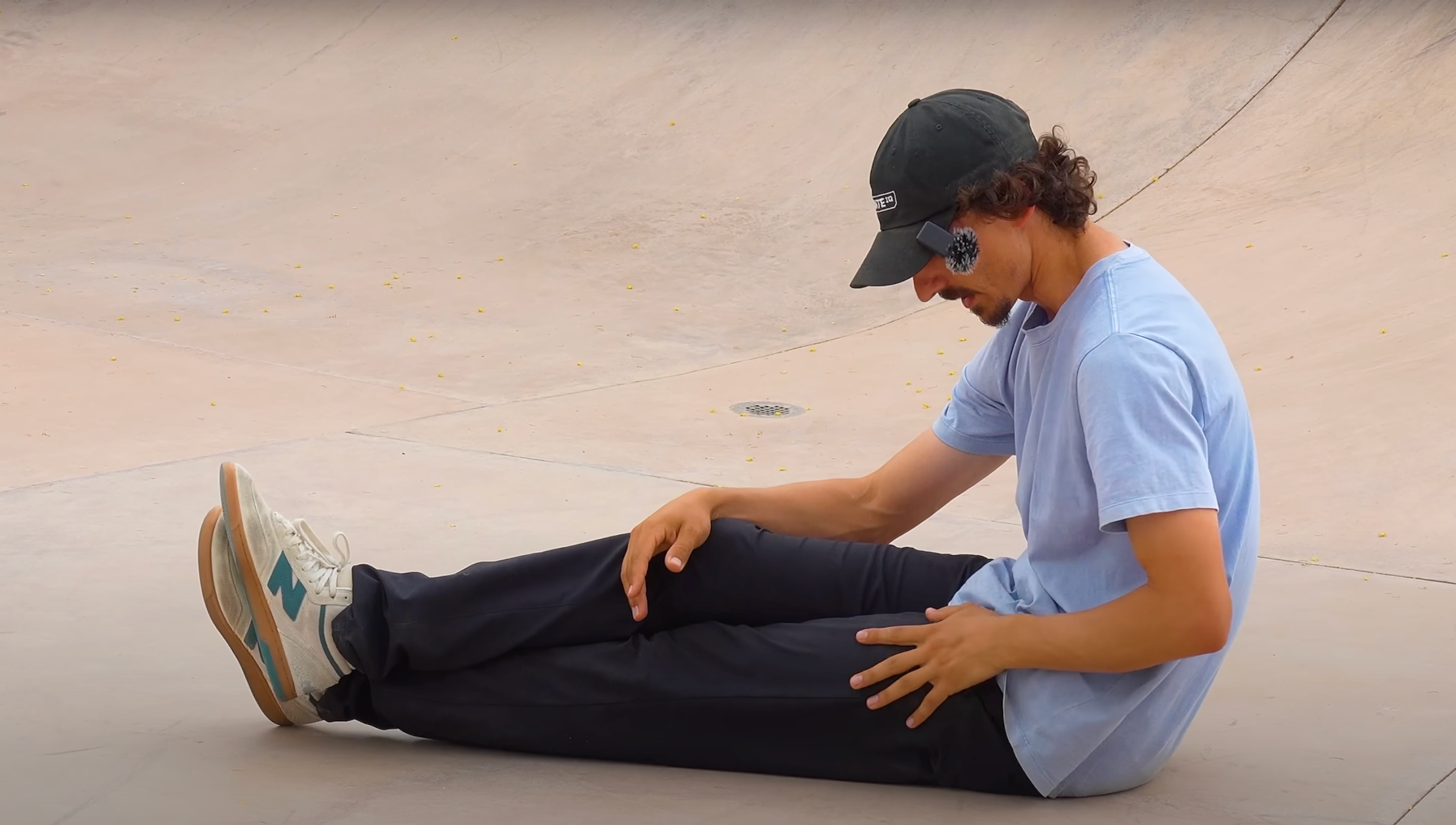You could be the best skateboarder in the world if you could bail every trick safely.
Seriously, the key to progression and longevity in skateboarding is staying safe so you can come back and practice again tomorrow.
Before we dive in, I have to say: the safest way to bail is to not bail at all. Always skate within your abilities to reduce your risk of falling in the first place.
I’m a huge proponent of padding up. Knee pads, elbow pads, helmets, butt pads, wrist guards… whatever helps you stay safe is the right choice.
Now, let’s talk about bails.
Bails vs Slams
A bail is when you see the fall coming and choose to fall in a controlled way. You commit to the bail once it starts, reacting to it so you can land safely.
A slam, on the other hand, is when you don’t see it coming. One second you’re skating, the next you hit the ground.
With the right instincts, you can sometimes turn a slam into a bail. But you never want to turn a bail into a slam.
Bail #1: Soft Knees
The golden rule: never land with locked legs. If your legs are straight and stiff, you can’t get off your board safely. If your board shoots out, you’re going to hit the ground hard.
Soft knees let you:
-
Jump off the board quickly (the “eject button”)
-
Get low enough to sit down without slamming your hands on the ground
Sure, you might dirty your pants or rip your shirt, but it’s worth it to stay safe.
Bail #2: The Eject Button
If you feel yourself leaning back, push the board forward and jump off to stay on your feet.
To practice, stand on your board, roll slowly, then jump off right before you would fall backward. Keep your feet under you. It is much safer than slipping out and landing on your back.
This bail is useful for:
-
Sudden obstacles such as someone stepping in your way
-
Tricks that go wrong mid-landing
Bail #3: Backwards Butt Slide
Sometimes, sliding it out is safer than trying to stay on your feet.
Key tips:
-
Get your feet down first
-
Commit your whole body to the slide
-
Stay low, tall falls hurt more
It might mean torn clothes or a few scrapes, but sliding spreads the impact across more surface area, making it much safer than crashing stiff and upright.
Bail #4: Forwards Butt Slide
This is your friend when you are going fast. Similar to the eject button, but instead of staying on your feet, you squat deep and sit down into the slide.
This works great for:
-
Fast ollies
-
Big gaps
-
Certain transition tricks
The key: get low before you hit the ground to soften the impact.
Bail #5: Forwards Runout
A classic. If you are falling forward, jump off and run it out.
Pro tips:
-
Jump far enough to clear the board
-
Run faster than you think you need to, slow runouts lead to tripping
-
Keep your weight forward so you do not stumble backward
Bail #6: Forwards Shoulder Slide
If you cannot run it out, drop into a side slide.
Steps:
-
Bend your knees deeply
-
Push off your feet to roll onto your side
-
Spread your impact across your whole side body
This hurts less than catching yourself with your hands or hitting face-first.
Bail #7: Backwards Runout
Used often for rotation tricks where your momentum is moving straight back.
Just like the forward runout, you will:
-
Jump off the board
-
Run a little faster than feels natural
-
If going too fast, turn it into a backwards butt slide
Applying the Right Bail
The key to safe bailing is knowing which one to use for the obstacle in front of you.
Example: Boardslides
For a bump-to-bar boardslide, I prefer a runout. If the board sticks, I jump and run, keeping the rail behind me instead of looping out backward.
Example: Hips
Over hips, the eject button keeps you on your feet without tripping on the slope.
Example: Step-Ups
For tricks like a backside flip up a step-up, I plan for a backwards butt slide. It is the safest way to bail when landing backward.
Example: Stair Sets
When going big down stairs, stay low and close to the ground so you can slide it out in either direction after absorbing the impact.
Final Thoughts
Bailing is not glamorous. Torn clothes, dirty shoes, maybe a scrape or two. But safe bails keep you skating longer and progressing faster.
Remember:
-
Stay within your limits
-
Keep your knees soft
-
Pick the right bail for the obstacle
Your future self will thank you when you are still skating strong years down the line.

